Domesticating and foreignizing in literary translation.
Tipo de material: Recurso continuoSeries Proceedings of the XIX World Congress of the International Federation of TranslatorsDetalles de publicación: San Francisco, CA : International Federation of TranslatorsAmerican Translators AssociationEdición: 2011Descripción: p. 53-63408 pTema(s):
En: World Congress, 19Resumen: The present paper, based on a thorough comparative study of some samples from the translated version Turbulence with its original Chinese novel Fuzao as an example for cultural translation of local literature, has examplified a discourse of Chapter 31 between the above two versions in teaching practice and explored that no matter how domesticating and foreignizing or literal translation and free translation are defined, they are source text oriented translation terms used for the same purpose of faithful translation in practice.
Recurso continuoSeries Proceedings of the XIX World Congress of the International Federation of TranslatorsDetalles de publicación: San Francisco, CA : International Federation of TranslatorsAmerican Translators AssociationEdición: 2011Descripción: p. 53-63408 pTema(s):
En: World Congress, 19Resumen: The present paper, based on a thorough comparative study of some samples from the translated version Turbulence with its original Chinese novel Fuzao as an example for cultural translation of local literature, has examplified a discourse of Chapter 31 between the above two versions in teaching practice and explored that no matter how domesticating and foreignizing or literal translation and free translation are defined, they are source text oriented translation terms used for the same purpose of faithful translation in practice.
| Tipo de ítem | Biblioteca actual | Colección | Signatura topográfica | Estado | Fecha de vencimiento | Código de barras | |
|---|---|---|---|---|---|---|---|
 Artículos/Analíticas
Artículos/Analíticas
|
Biblioteca Bartolomé Mitre | Colección General | 061.3:81'25 =111 FIT XIX 2011 (Navegar estantería(Abre debajo)) | Disponible | 3373-17 |
Navegando Biblioteca Bartolomé Mitre estanterías, Colección: Colección General Cerrar el navegador de estanterías (Oculta el navegador de estanterías)
| 061.3:81'25 =111 FIT XIX 2011 Comment enseigner la traduction médicale? | 061.3:81'25 =111 FIT XIX 2011 Consumption and distribution of fan subtitles in the new media environment in Korea | 061.3:81'25 =111 FIT XIX 2011 Corpus linguistics approach to relexicalization of hard-to-translate lexical items in interpreter-mediated court sessions | 061.3:81'25 =111 FIT XIX 2011 Domesticating and foreignizing in literary translation. | 061.3:81'25 =111 FIT XIX 2011 Editing strategies as an essential part of translator training | 061.3:81'25 =111 FIT XIX 2011 Enhancing working memory capacity for interpreters | 061.3:81'25 =111 FIT XIX 2011 On the intriguing relationship between literary translation and creativity. |
The present paper, based on a thorough comparative study of some samples from the translated version Turbulence with its original Chinese novel Fuzao as an example for cultural translation of local literature, has examplified a discourse of Chapter 31 between the above two versions in teaching practice and explored that no matter how domesticating and foreignizing or literal translation and free translation are defined, they are source text oriented translation terms used for the same purpose of faithful translation in practice.
No hay comentarios en este titulo.

